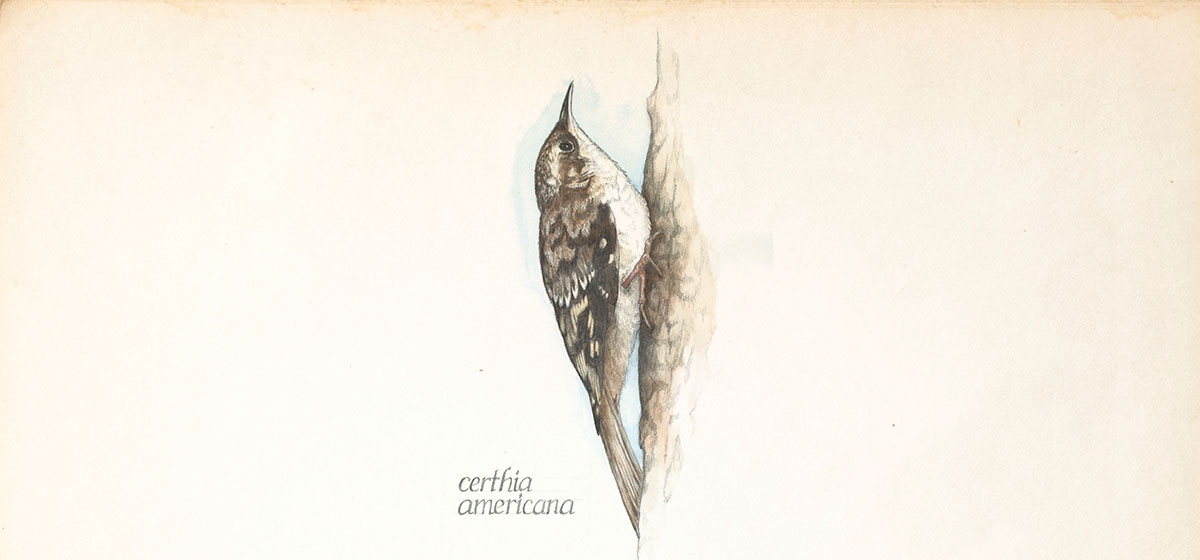
I was listening recently to an NPR interview about an elephant researcher in Africa. It was a story about the challenge of tracking a huge and relatively abundant mammal that has the tendency to disappear into the bush in the blink of an eye. While it’s hard to imagine, it’s the way of wild creatures big and small. They blend in and become invisible.
There are some birds I’ve been plain lucky to observe, the seldom-seen species of the avian world. Sure, they’re always out there—rain or shine, snow or heat. But I just don’t see them often, not without looking hard and being in the right place at the right time. When they do appear, it’s magical. Take the brown creeper, as much a Pittsburgh local as a bedecked Steelers fan on game day. Just a bit more subtle in attire and behavior.
The brown creeper is a bird of bark. Tree bark. That’s where it spends its days, blending in so subtly that you can think the surface of a tree has come alive before you see the bird itself. The creeper camouflages itself in a mix of blacks, whites and browns. White throat and belly, buff toward the tail. Head mottled gray and brown. Wings dark, with a band of tan across them, a dramatic cape in flight, hidden in folds when foraging.
Meticulous and patient, the creeper works its way up a tree trunk, probing with its sharp, decurved beak under each crevice, into every pocket of shadow. A morsel of beetle here, a spider egg there, a quick bite of aphid—the bird works the furrows and wee woody canyons that define the trunks of mature trees and suburban woodlots. Short legs keep it close to its work, three clawed toes pulling it unceasingly upward, one long hind toe providing a pivot point and anchor. Similar in foraging tastes and habits to woodpeckers, the brown creeper likewise uses its tail to prop itself on a trunk or along a limb, stiff central tail feathers lending further support to its gathering efforts. One tree thoroughly gleaned and summited, the bird will fly down to the base of another to start its buffet again.
Across western Pennsylvania and the entire U.S., brown creepers pair up in spring, building hammock nests behind the peeling bark of large dead or dying trees. The coverings act as awnings for the five or six eggs, which are white, splotched with light brown. After two weeks of incubation by the female, naked young hatch and quickly grow the feathers that allow them to fledge a fortnight later. And off they go into the world.
So, how to spot these shy birds? As with many species, sound is more of a clue than sight. Males whistle a high-pitched song that some describe as “trees, beautiful trees.” (I love these memory aids but regularly struggle to make them fit the notes I hear outside.) Males and females alike deliver extended high call notes and trills. All can be heard on the website of the Cornell Lab of Ornithology, the premier digital library of natural sounds (birds.cornell.edu). Or join the Audubon Society’s Christmas Bird Count this December (aswp.org). Ten or more brown creepers are spotted by amateur counters on this annual weaponless hunt. The good folks of the Three Rivers Birding Club can also help you find this retiring gem (3RBC.org), maybe closer to home than you think.


